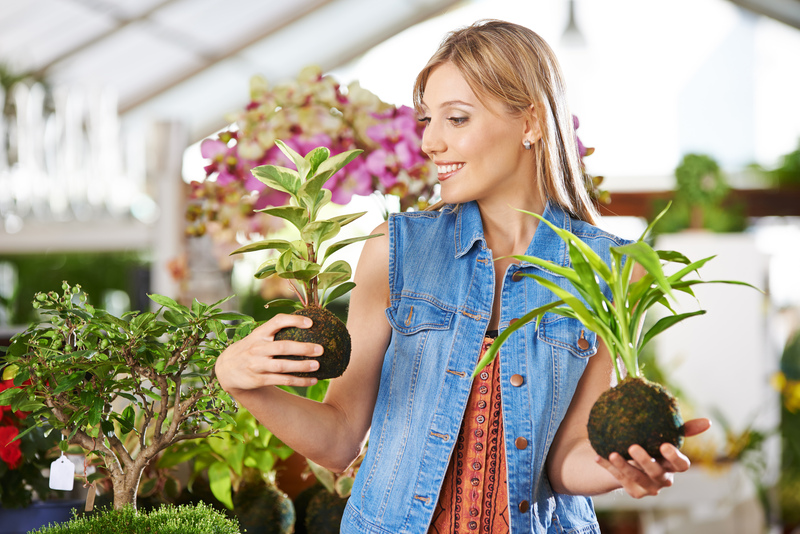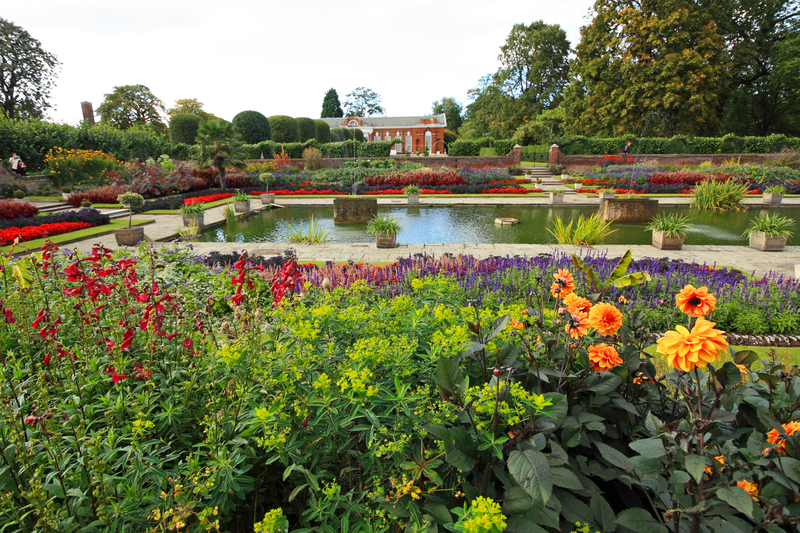Vertical Gardens: Green Wall Wonders
Posted on 23/09/2025
Vertical Gardens: The Green Wall Wonders Transforming Urban Spaces
In an age where urban spaces are expanding and greenery seems to be shrinking, vertical gardens, also known as green walls or living walls, are fast becoming a sensation in landscape architecture and environmental design. These lush, vertical installations are not only visually striking but also bring a host of ecological and health benefits to the environments where they're installed. Discover the magic of green wall wonders and how these vertical garden systems are reshaping both indoor and outdoor landscapes worldwide.

What Are Vertical Gardens?
A vertical garden, sometimes referred to as a plant wall or living wall system, is a structure covered with various plants growing vertically, either attached to existing walls or as independent installations. These gardens utilize hydroponics, soil-based supports, or cutting-edge modular systems to sustain lush greenery on surfaces that were once barren.
Types of Vertical Gardens
- Modular Green Walls: Pre-planted panels or trays that fit together to form a living tapestry.
- Freestanding Vertical Gardens: Self-supporting structures, often used as dividers or privacy screens.
- Green Facades: Plants grow upward using trellises, wire mesh, or cables attached to facades.
- Indoor Living Walls: Installed within interiors for air purification and aesthetic enhancement.
- Pocket Planters: Fabric or felt pockets holding soil and plants, perfect for small-scale projects.
Key Components of a Green Wall System
A successful vertical gardening system incorporates structural supports, irrigation, planting medium, and appropriate plant selections. Advanced systems often include automatic watering, nutrient distribution, and sensor-based monitoring to ensure optimal plant health.
Benefits of Vertical Gardens: More than Just Aesthetic Appeal
Green wall wonders are more than just eye-catching decor additions--they offer a rich array of ecological, environmental, and health benefits that make them a smart choice for both public and private spaces.
1. Enhanced Air Quality
- Vertical gardens filter airborne toxins, dust, and pollutants, improving indoor and outdoor air quality.
- Living walls absorb carbon dioxide and release oxygen, fostering fresher and cleaner air.
2. Natural Insulation & Temperature Regulation
Green wall systems act as natural insulators, keeping buildings cooler in summer and warmer in winter. By reducing the need for air conditioning and heating, vertical gardens also contribute to significant energy savings.
- Reduction of Urban Heat Islands: Plant-covered surfaces absorb less heat than concrete, helping to moderate urban temperatures.
- Sound Insulation: Dense foliage in a living wall helps reduce noise pollution by absorbing and deflecting urban sounds.
3. Promoting Biodiversity
Introducing vertical plant walls into city environments supports local pollinators and birds, creating mini ecosystems that nurture biodiversity in urban habitats.
4. Wellness and Health
- Improved Mood: Studies show that working or living near greenery and natural elements reduces stress and enhances overall well-being.
- Increased Productivity: Green office walls can boost creativity and employee satisfaction.
- Cleaner Indoor Air: Living walls in homes and offices can alleviate symptoms of sick building syndrome.
5. Space Efficiency & Urban Agriculture
For cities grappling with limited ground space, vertical gardens open up new possibilities for urban agriculture. Edible green walls can support vegetable, herb, and small fruit production, making fresh produce more accessible to local communities.
How to Design and Install a Vertical Garden
Planning to add a vertical garden display to your living or working space? Whether you dream of a striking living wall for your office or a compact herb garden in your kitchen, successful installations require careful planning and informed choices.
1. Site Assessment
- Evaluate sunlight exposure--ensure your wall receives adequate light for selected plants.
- Check wall strength; consider weight of plants, supports, and water.
- Assess climate or indoor environment for temperature and humidity needs.
2. Choosing a Support System
Opt for commercial modular systems, DIY panels, or pocket-style planters based on your budget, desired aesthetics, and maintenance capabilities. Pre-fabricated systems often come with integrated irrigation and fertilization systems.
3. Selecting Suitable Plants for Vertical Gardens
The best plant choices depend on location--indoor walls may thrive with low-light species, while exterior green walls can support sun-loving varieties. Consider these versatile, low-maintenance favorites:
- Ferns (e.g., Boston fern, Bird's nest fern)
- Pothos
- Spider plant
- Succulents
- Herbs (e.g., basil, thyme, mint)
- Ornamental grasses
- Flowering annuals for a splash of color
4. Irrigation and Maintenance
Maintaining lush living walls requires regular watering and occasional fertilization. Drip irrigation systems with timers are ideal for hands-off maintenance. Choose self-watering systems for convenience, especially for larger installations.
- Trim plants periodically to encourage healthy growth and prevent overcrowding.
- Regularly inspect for pests or diseases and address issues promptly.
- Replace any plants that are struggling to ensure consistent, vibrant coverage.
Inspiring Applications of Green Wall Technology
From residential balconies to corporate towers, the scope for vertical garden systems is endless. Let's explore some standout examples of green wall wonders in modern architecture and urban planning.
1. Commercial and Corporate Green Walls
Companies worldwide install living walls in lobbies, meeting rooms, and facades to enhance their eco-friendly brand image, create inviting spaces, and improve internal air quality. Some organizations go even further, covering entire multistory exteriors with lush plantings.
2. Residential and Home Living Walls
- Kitchen herb gardens grown vertically for convenience and fresh ingredients.
- Vertical plant panels as attractive green accents in living rooms and hallways.
- Balcony privacy screens that double as space-saving plant displays.
3. Public Spaces & Urban Infrastructure
Municipalities are integrating green wall installations into parks, transit stations, schools, and bridges, transforming utilitarian structures into vibrant green community assets.
4. Urban Agriculture and Edible Walls
Cutting-edge urban farms are using vertical gardening technology to grow leafy greens and herbs for local restaurants, schools, and residents, reducing food miles and supporting local economies.
Challenges and Considerations for Vertical Garden Installation
While the possibilities for vertical gardens are vast, it's important to be aware of the challenges involved:
- Structural Requirements: Not all walls can bear the load of a mature living wall; expert assessment may be necessary.
- Waterproofing: Ensure proper waterproof membranes are installed to prevent water damage to walls.
- Maintenance: Regular care is essential to prevent plant death and pest problems.
- Plant Health: Appropriate plant selection is crucial for sustained success.
Sustainability and Environmental Impact
Many experts affirm that well-managed vertical wall gardens have a positive impact on urban sustainability initiatives. They help reduce carbon footprint, manage stormwater, and encourage eco-conscious architectural practices. However, poorly designed systems can waste water and resources, so it's essential to implement effective irrigation and use drought-tolerant species where possible.
Future Trends in Vertical Green Wall Design
With rapid advancements in technology and growing climate concerns, the future of vertical gardening is incredibly bright. Here are just a few trends shaping the next era of green wall wonders:
- Smart living walls integrated with IoT technology for automated care and sustainability monitoring.
- Expansion of edible landscaping in urban settings for food security and community gardens.
- Use of recycled materials and water-efficient substrates to promote eco-friendly design.
- Improved plant genetics and bioengineering, allowing a wider array of plants for indoor environments.
- Integration with renewable energy solutions, such as solar panels or energy-generating plants.

Conclusion: Reimagine Urban Living with Green Wall Wonders
Vertical gardens have revolutionized the way we perceive and interact with urban greenery. From boosting biodiversity to purifying the atmosphere, these living walls are essential elements of resilient and livable cities. Whether you are a homeowner, architect, or city planner, embracing vertical gardening techniques can turn concrete jungles into refreshing green sanctuaries.
Ready to experience the awe of green wall wonders? Start with a small project--a kitchen herb garden or a bedroom air-purifying plant wall. For large-scale applications, partner with professional designers to create thriving, sustainable vertical garden installations that redefine your environment. The possibilities are endless, and the future of urban nature is growing ... up!
Frequently Asked Questions about Vertical Gardens
Q: What is the difference between a green wall and a vertical garden?
While the terms are often used interchangeably, "green wall" typically refers to walls fully or partially covered with vegetation, either planted in soil or soilless systems. "Vertical garden" is a broader term that can include any vertically arranged planting, including structures that are not necessarily attached to a building.
Q: Are vertical gardens expensive to install and maintain?
Costs vary based on the size, materials, plant selection, and technology involved. While initial expenses can be substantial for larger installations, ongoing maintenance can be mitigated with automated irrigation and proper plant choices.
Q: How long do living walls last?
With diligent care and maintenance, well-designed green wall systems can last for many years. Some public installations have thrived for over a decade!
Q: Can vertical gardens be installed indoors?
Absolutely! Indoor living walls are popular for both homes and commercial spaces, provided that plants receive appropriate lighting and humidity levels.
Q: What are the best plants for vertical gardens?
Popular choices include ferns, pothos, philodendrons, succulents, spider plants, herbs, and flowering annuals. Select species based on light, humidity, and temperature conditions at your site.
Experience the magic and benefits of vertical gardens--the ultimate green wall wonders that are rising up to rejuvenate our cities and homes.

